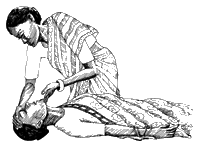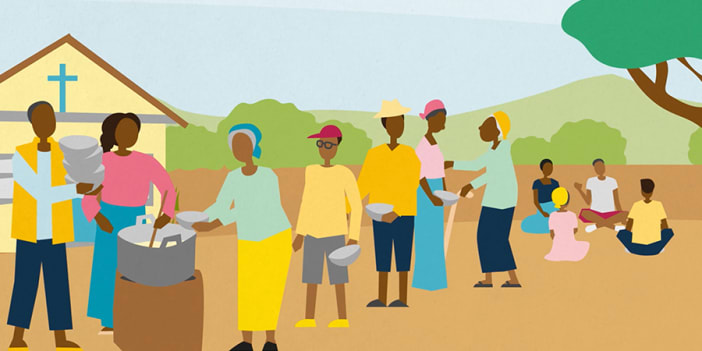After checking for danger, make sure that injured people are still breathing. If someone is badly injured, particularly if their neck or back may be damaged, move them as little as possible. In order of priority, check: AIRWAY BREATHING CIRCULATION
- The Airway of an unconscious person may be narrowed or blocked. This makes breathing either difficult and noisy, or impossible if the tongue drops back and blocks the throat. Lift the chin by placing two fingers under the chin with the other hand on the forehead, tilting the head back.
- Check if a person is still Breathing by placing your ear near their nose and mouth, and listen. If they are still breathing, place in the recovery position. If they have stopped breathing, give mouth to mouth ventilation. Pinch the nostrils together, take a deep breath and blow into the mouth, firmly sealing your lips around the mouth so air is not lost. Do this twice and then check for breathing. Continue this, giving about ten breaths a minute until help arrives or breathing begins.
- Test Circulation of blood by checking if the heart is still beating. Place your finger tips to the side of the windpipe in the person’s throat. If no heartbeat can be felt, use chest compression to try and keep the heart beating. If the person is also not breathing, give 15 compressions and then two breaths.










